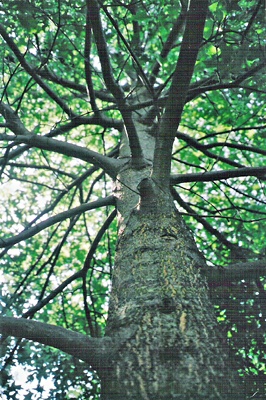All Nonfiction
- Bullying
- Books
- Academic
- Author Interviews
- Celebrity interviews
- College Articles
- College Essays
- Educator of the Year
- Heroes
- Interviews
- Memoir
- Personal Experience
- Sports
- Travel & Culture
All Opinions
- Bullying
- Current Events / Politics
- Discrimination
- Drugs / Alcohol / Smoking
- Entertainment / Celebrities
- Environment
- Love / Relationships
- Movies / Music / TV
- Pop Culture / Trends
- School / College
- Social Issues / Civics
- Spirituality / Religion
- Sports / Hobbies
All Hot Topics
- Bullying
- Community Service
- Environment
- Health
- Letters to the Editor
- Pride & Prejudice
- What Matters
- Back
Summer Guide
- Program Links
- Program Reviews
- Back
College Guide
- College Links
- College Reviews
- College Essays
- College Articles
- Back
Dinosaur Trees MAG
Did you know that prehistoric plants and animals are secretly living among us? Just recently, scientists have discovered links between some modern species and their prehistoric relatives. Take the crocodile for example; this species’ ancestors were enormous, aquatic dinosaurs that ruled ponds and lakes alike. As time progressed, these reptiles evolved and changed according to their environment, resulting in the present-day crocodile.
Crocodiles are not the only prehistoric species that has been living among us. David Noble, a parks and wildlife officer and avid bushwalker, stumbled upon a real-life Jurassic Park in 1994 while exploring the Wollemi National Park near Sydney, Australia. There were no dinosaurs in this lost world – just 39 prehistoric pine trees that were thought to have been extinct. The Wollemi pine is not a true pine but belongs to the Araucariaceae family that lived 110 million years ago.
“Initially I didn’t think it was anything new,” Noble told reporters. What he didn’t know was that these trees are one of the world’s oldest and rarest tree species, with the oldest known fossils dating back 90 million years.
Mature Wollemi trees measure 130 feet tall and nearly 10 feet in diameter. They have attractive, unusual waxy dark green foliage, and “bubbly” bark that sometimes sprouts multiple trunks.
“The discovery is the equivalent of finding a small dinosaur still alive on Earth. The only other discovery of its kind was in 1994, when another prehistoric tree species was found,” said Carrick Chambers, director of the Royal Botanic Gardens.
In 2015, the status of the Wollemi Pine trees was elevated to critically endangered, not only because are there so few living specimens in the wild, but because they face a new threat: root mold. The Wollemi trees have been found to be susceptible to Phytophthora, a pathogen that causes dieback of branches and stems. There is no treatment for the trees once the mold attacks them.
So, what is the outlook for these dinosaur trees? Since there is presently no cure for root mold and an outbreak could kill many or even all of the Wollemi trees, what should we do? What we need to do is educate the public to bring light to the conservation of these trees and their pending extinction.
Dr. Maynard, a professor at SUNY ESF and co-director of the American Chestnut Research and Restoration Project, said that his work could be applied to the Wollemi trees. He splices genes into American Chestnut tree embryos, creating resistant trees.
The Wollemi Pine Conservation Club works to conserve and advocate for the long-term survival of these magnificent trees. They started off by selling small, potted Wollemi trees, which has generated widespread demand and interest for the conservation of the pines. Hundreds of people from all around the world have contacted the Conservation Club seeking to buy Wollemi pines. The trees are now sold in the United Kingdom, New Zealand, Eastern and Western Europe, and Japan. Sadly they are rarely imported to the United States.
At $169 to $500 for a baby Wollemi pine, that’s a pricey piece of prehistory. But, it’s a small price to pay for the conservation of one of the world’s oldest and rarest tree species. Not only are these trees a part of our Earth’s history, they are now part of our present day.

Similar Articles
JOIN THE DISCUSSION
This article has 0 comments.
